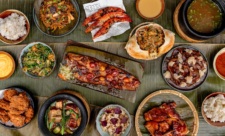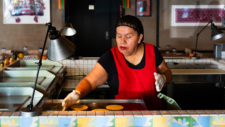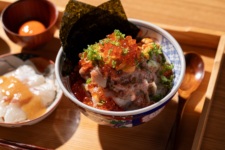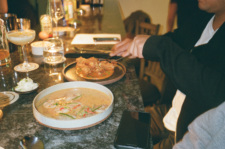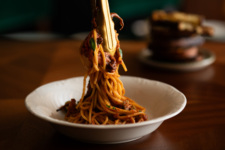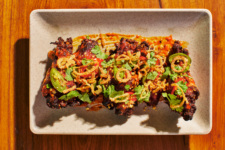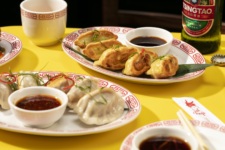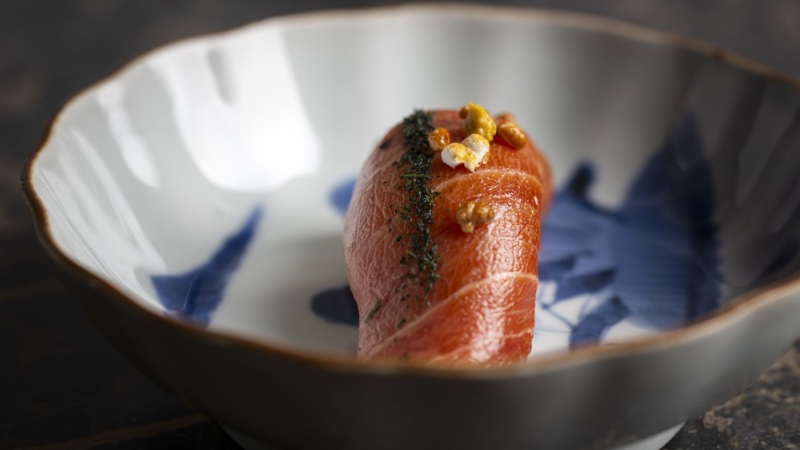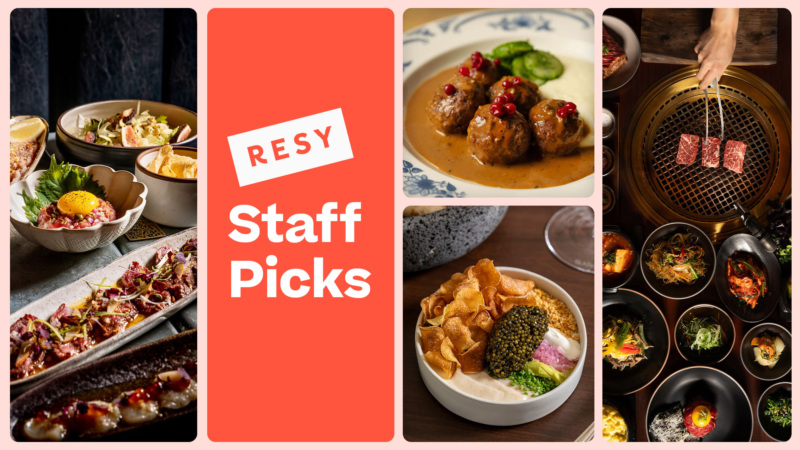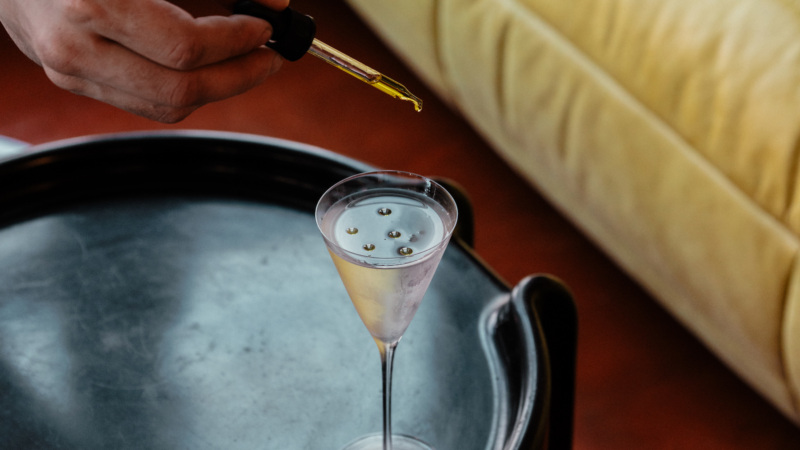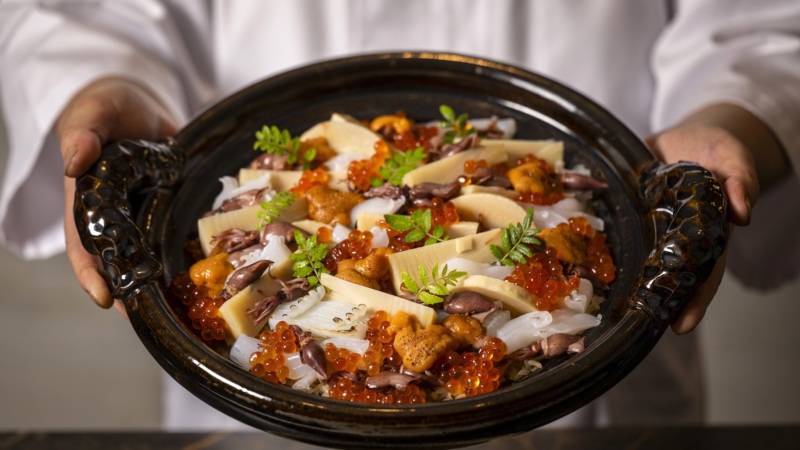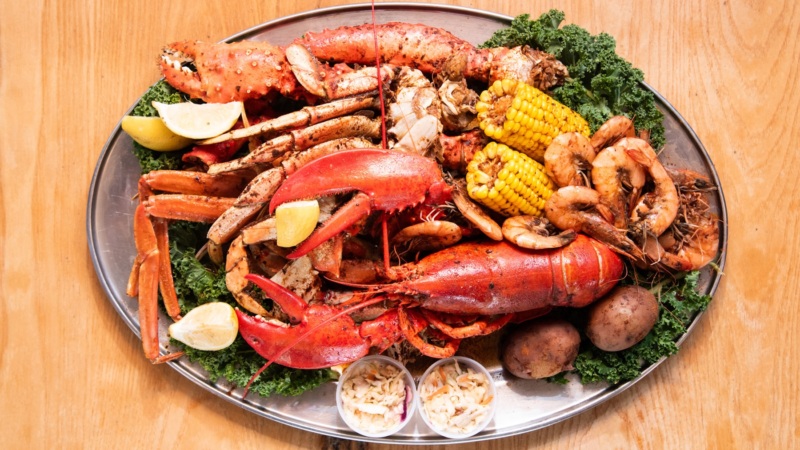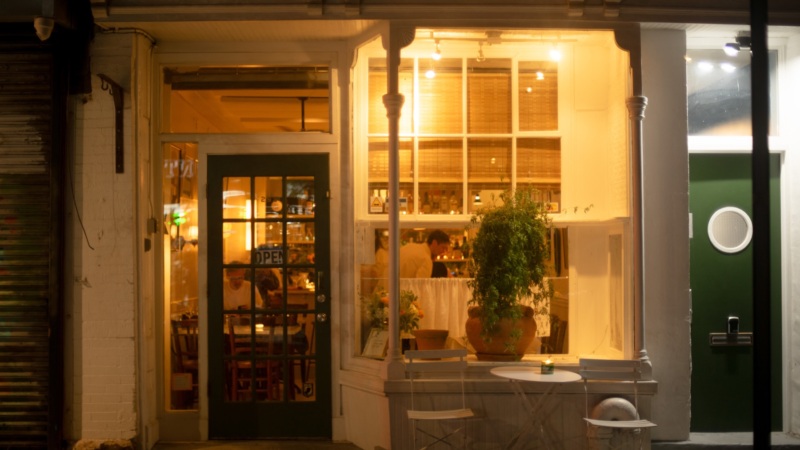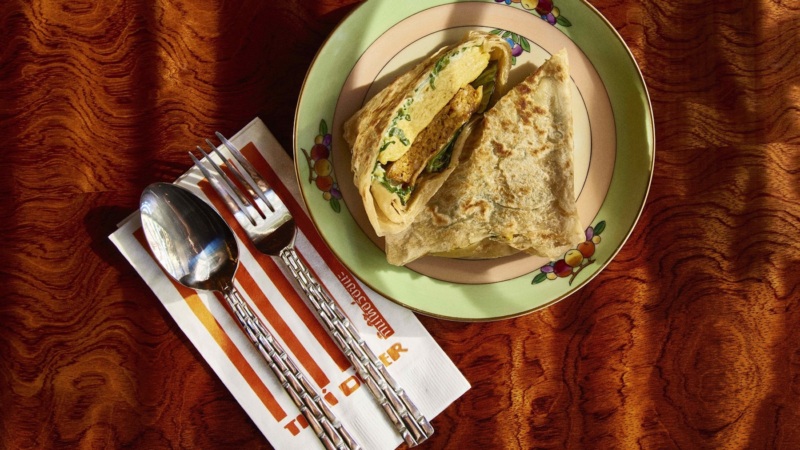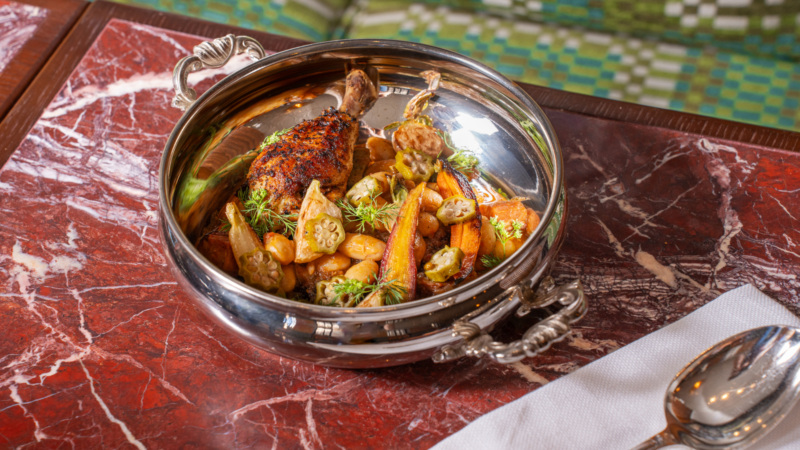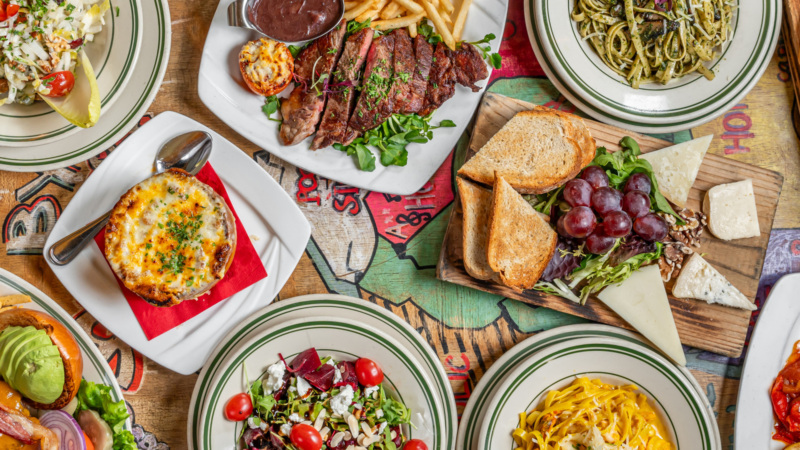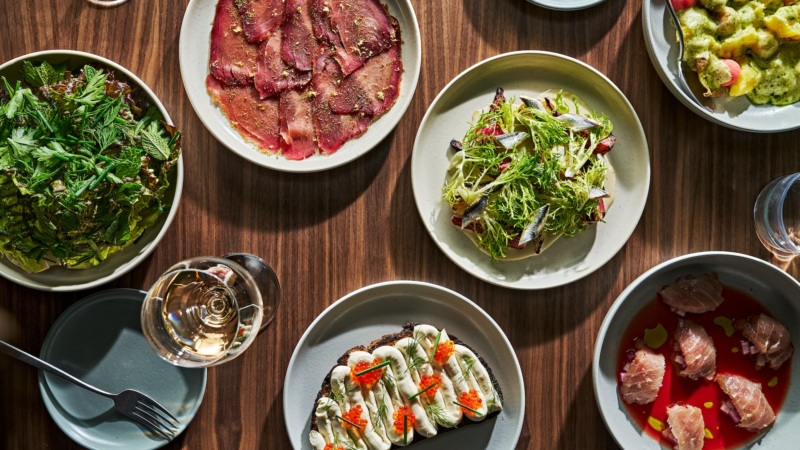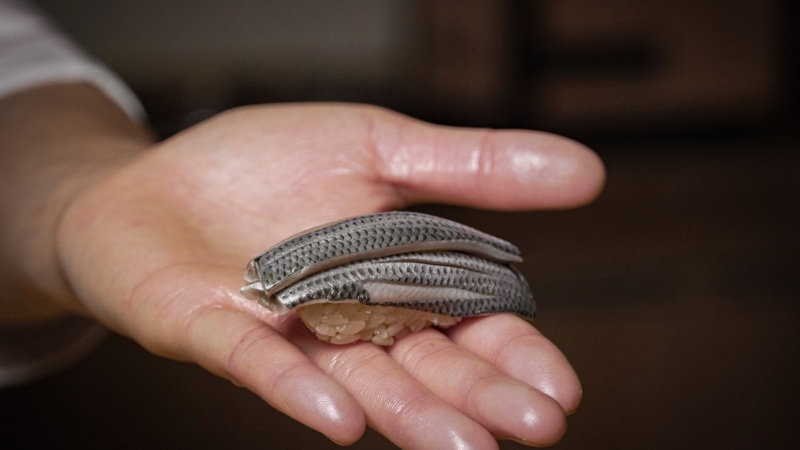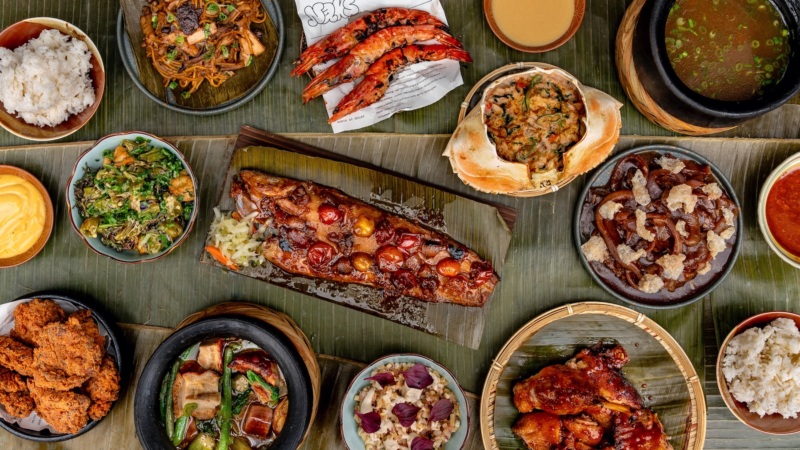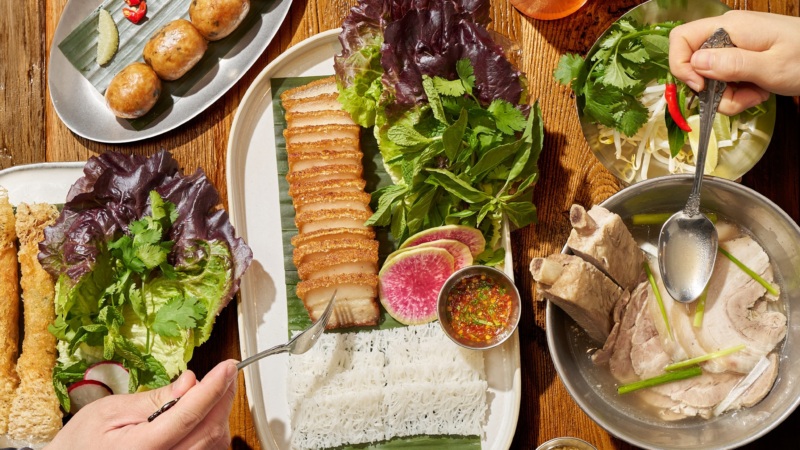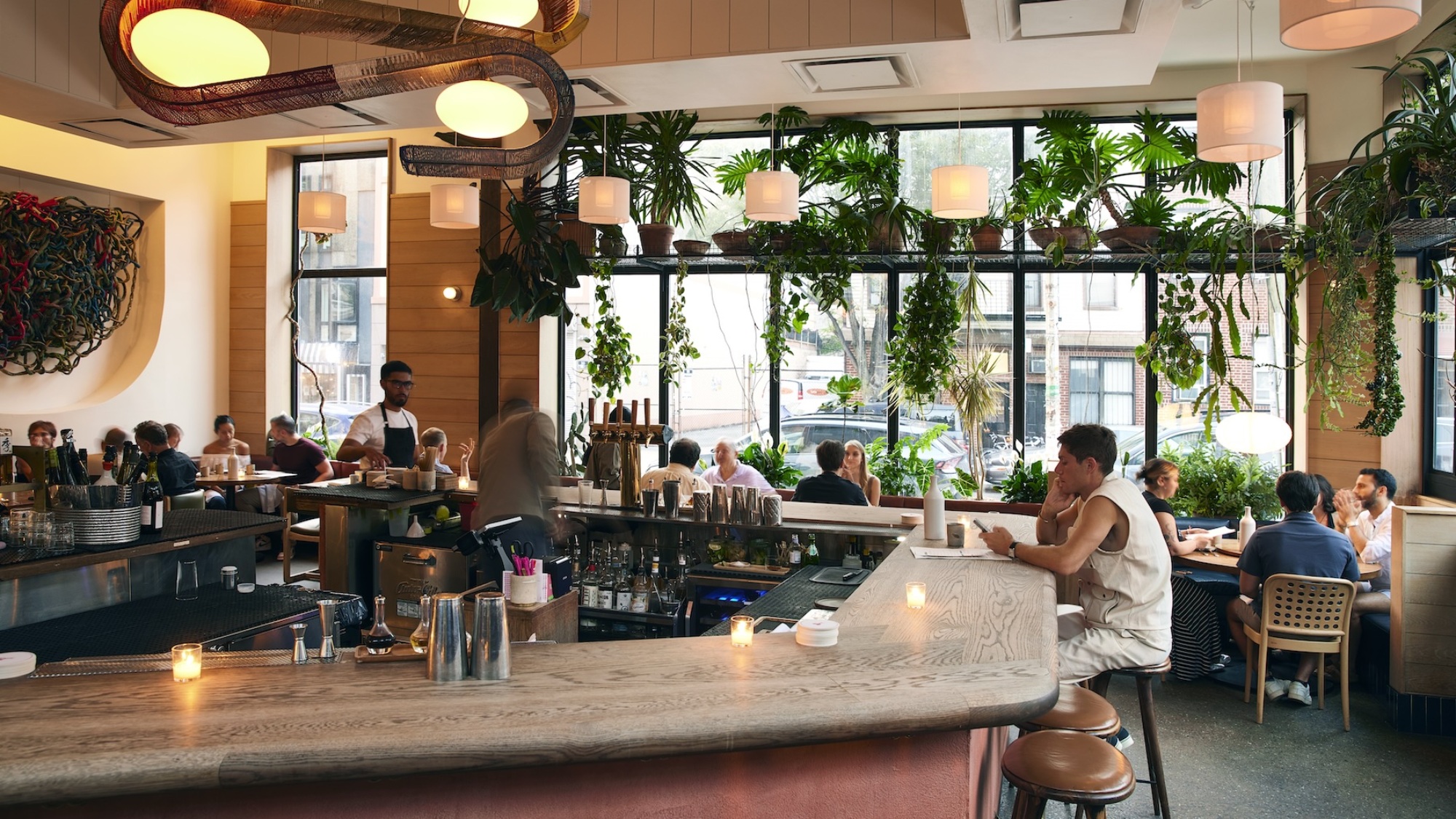
Five Essential Dishes to Order at Llama Inn
Llama Inn has been defining Peruvian cuisine in New York City for close to a decade. Chef-owner Erik Ramirez’s dishes — inventive takes on ceviche, snacks, and meats that still maintain tradition — have put Peruvian food and culture in the spotlight, inspiring a generation of chefs and introducing New Yorkers to dishes like anticuchos and lomo saltado, and ingredients like leche de tigre.
“New York City is basically a version of Peru, without the mountains,” Ramirez says. “You have all of these cultural influences [in Peruvian cuisine]: Indigenous, Spanish, African, Chinese, Japanese, a little Italian. It’s created this unique flavor, and that’s really what Peruvian cuisine is about. We try to touch all of those elements at our restaurants.”
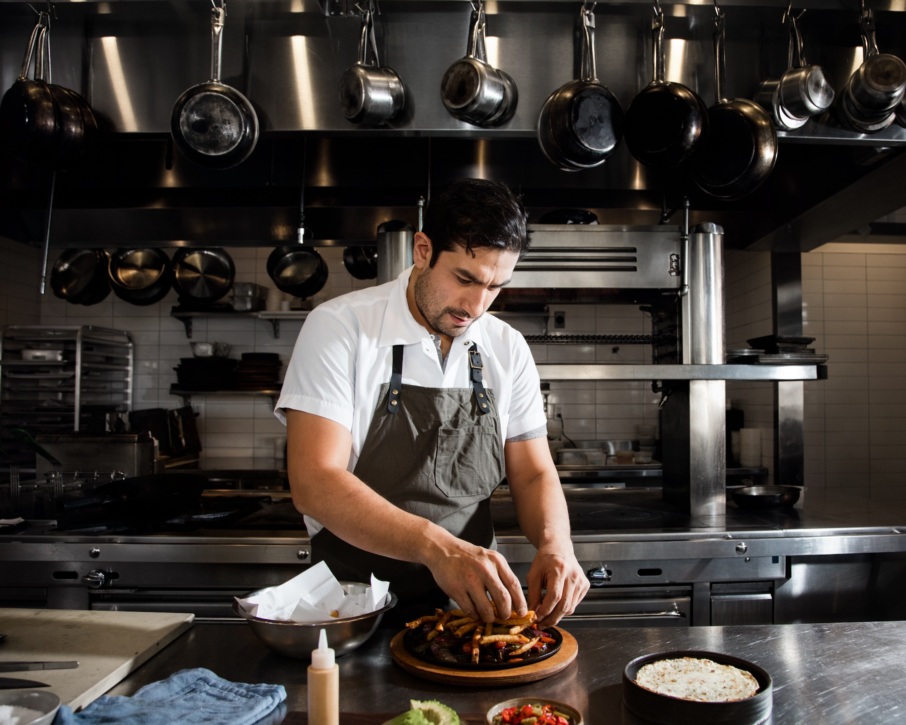
In addition to Llama Inn, which also has locations in Madrid and London, Ramirez oversees their sister restaurant Llama San, a Nikkei-style spot in the West Village. Plus, they’ll soon open Papa San, a restaurant with a sake and Latin spirit bar, at The Spiral in Hudson Yards.
“We see restaurants pop up and see their food, and we think ‘Oh my God, that’s a version of what we did three years ago,’” Ramirez says. “It’s not like they’re taking the idea; it’s just evolution. They’re making it new, going through the process and ending up with something that we did, naturally. That was always the goal — to give this food more of a reach and bring more awareness to it.”
We sat down with Ramirez to find out what you should order, from the traditional to the not-so-traditional. Here, in his own words, are the five essential dishes to get at Williamsburg’s Llama Inn.
More From Resy
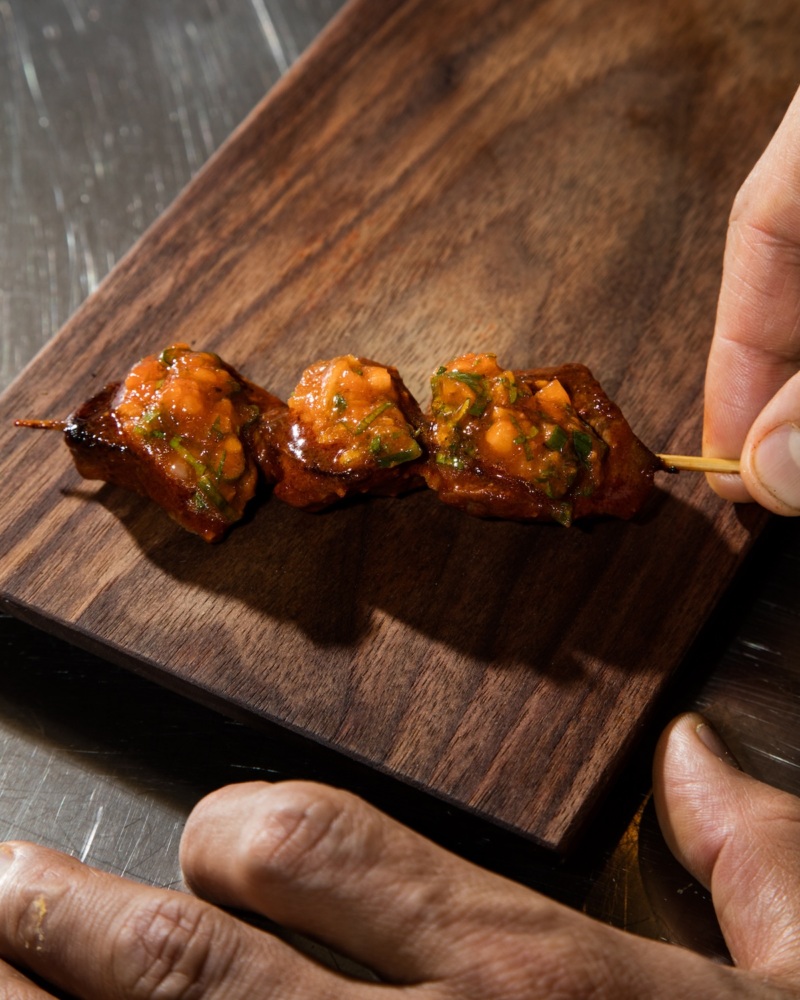

1. Beef Heart Anticuchos
Beef heart, ají panca, rocoto salsa
“This is as traditional as it gets. We stick to tradition for this dish, and we don’t really mess with it, but we do involve a little more technique in the cooking and we try to source a good-quality beef heart. It’s a very popular street food. If you go to Peru or to Lima and you’re walking around, there are tons of street vendors and little carts, and they’re selling anticuchos like beef heart, or gizzards, or intestines.
“We marinate the beef heart in what we call anticuchera, a marinade with ají panca, which is a Peruvian chile that is similar to guajillo. It’s smoky and earthy, and it has this deep, roasty flavor profile. We boil those and make a purée with oil, vinegar, cumin, salt, and pepper. Then we grill it, and brush it with the marinade.
“We serve it with a salsa carretillera; we call it a salsa carretillera because it’s the salsa you’d typically find on the food carts. Everyone has this scallion-based salsa that they put on anticuchos that’s very spicy. We have our own version of it, with scallions and ají rocoto, which is a very spicy Peruvian chile. We boil it to take some heat off, and then we purée it, and use that as our base, with scallions, garlic, red onion, vinegar, and salt. It’s chunky, and we put it over the beef heart.
“This is a good representation of tradition. It’s something that we don’t mess around with to keep its integrity, to keep the flavor profile. There are certain things that you can’t really touch, that you can’t make it better than the original.”
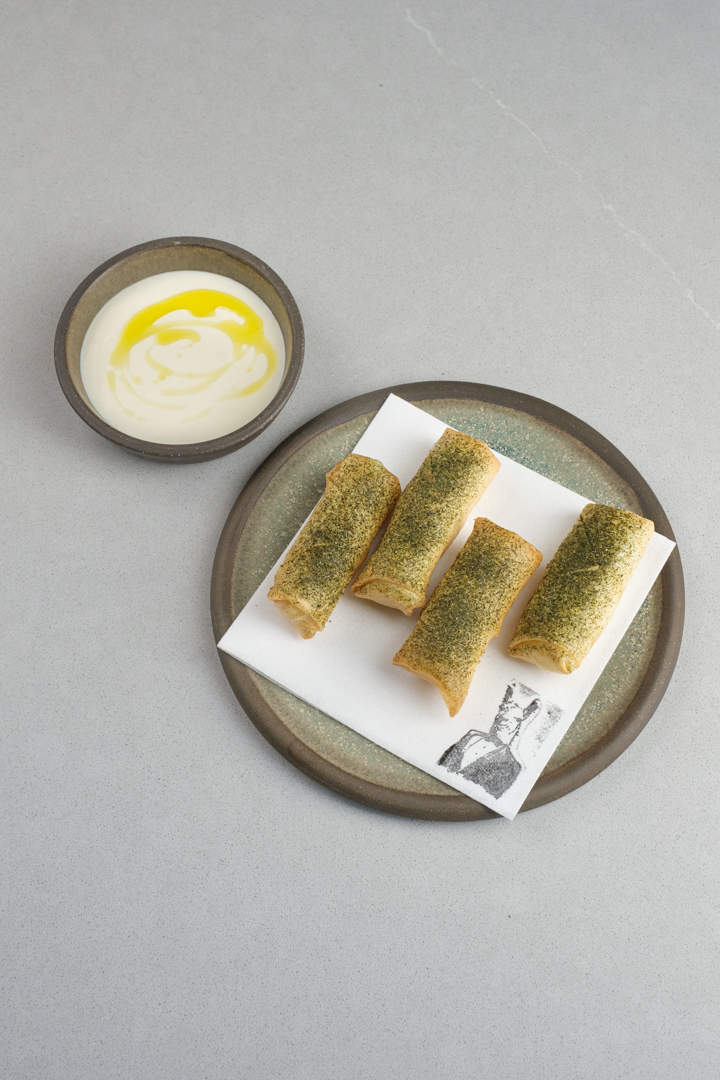

2. Jalapeños Tequeños
Taleggio, buttermilk, nori
“This is a fun dish. I was in London at a restaurant, and they had a jalapeño popper on the menu. It had been so long since I had one, and it was so good. I was drinking a beer, and I was like, ‘This is perfect.’
“I thought, ‘How can I make this Peruvian? How can I connect something that people know, like jalapeño poppers, and bring it back to what we do at the restaurant?’ Our food is approachable and accessible; we offer something familiar while giving something different.
“What we do is we put the jalapeño in a spring roll. Tequeños are a popular snack in Peru, and they’re like little fried spring rolls. They can have shrimp or cheese or ground meat, so I thought we could make one as a jalapeño popper. It’s a roasted jalapeño with taleggio cheese in it. We wrap it in a spring roll, then we deep fry it, so it’s super crunchy on the outside and spicy on the inside.”
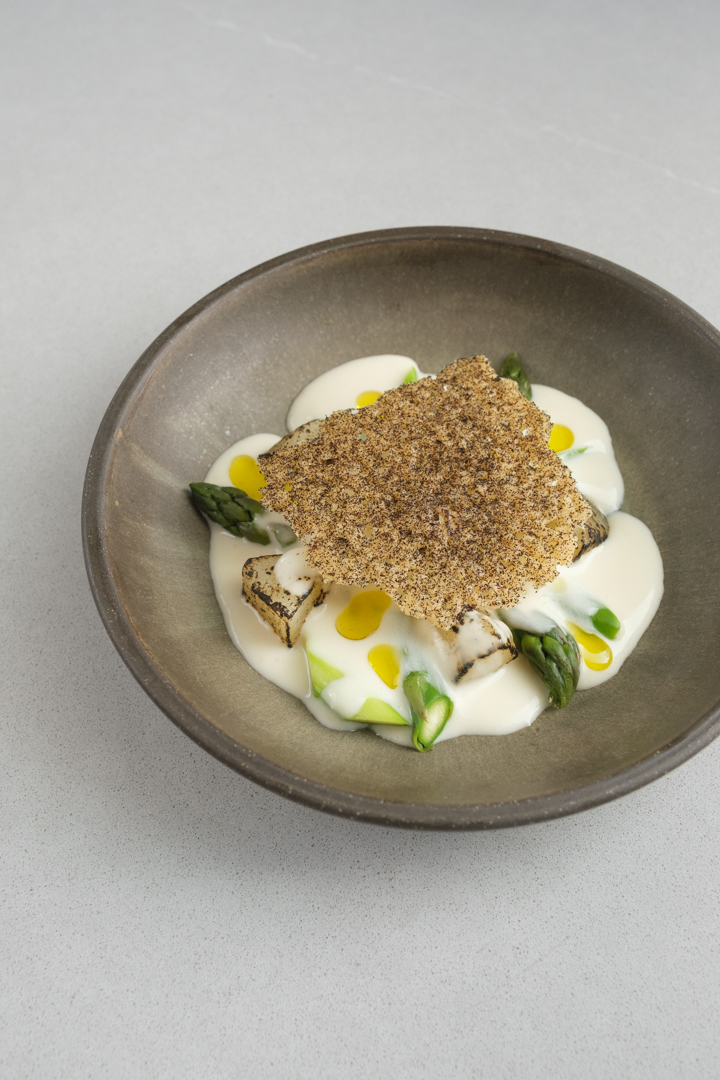

3. Asparagus Ceviche
Potato leek leche de tigre, Parmesan
“This dish is a play on a vichyssoise, a soup with asparagus and Parmesan in it. We make our base, which is the same one we use for all of our ceviches, with fish stock, lime juice, onion, garlic, celery, ginger, and habanero, blended and strained. That leftover liquid is what we call leche de tigre. We take that base, and in this case, we blend potatoes into it. Peru is also the land of potatoes; we have over 2,500 varieties.
“It’s interesting because you have something that is really French, but we try to make it Peruvian by turning it into ceviche. There are potatoes in it, chunks of asparagus, and a Parmesan crisp. It’s visually really nice to look at, and it’s not what you’d expect for a ceviche. You read ‘asparagus ceviche’ and wonder what the hell is going on, but it’s delicious nonetheless.”
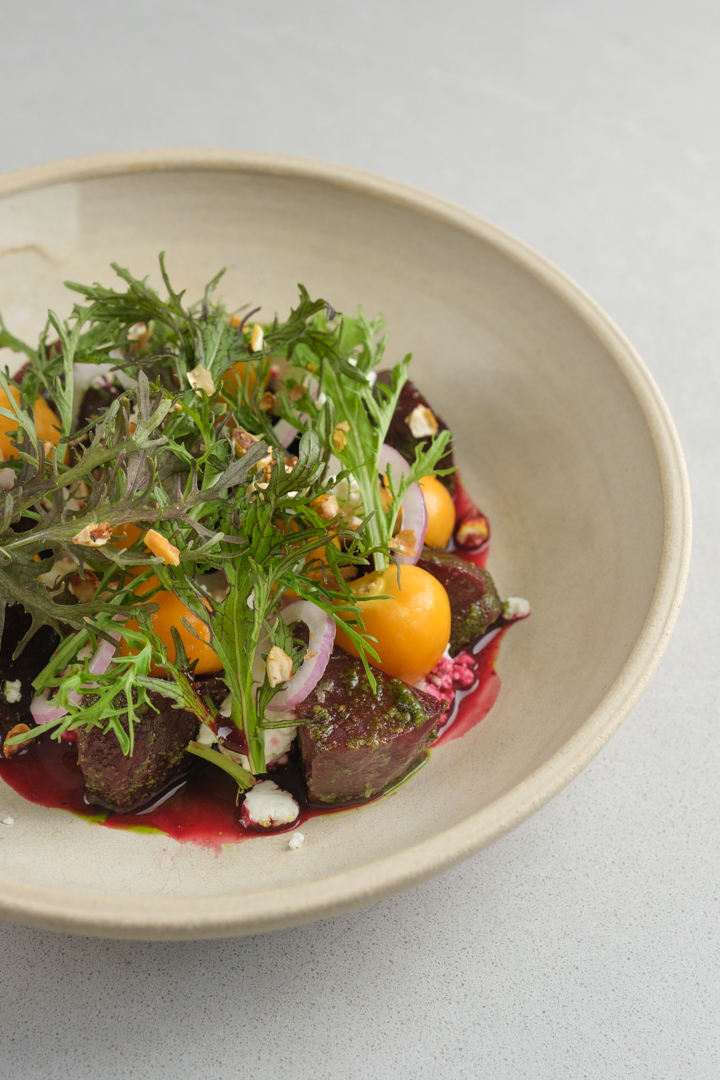

4. Roasted Beets
Gooseberries, goat cheese, muña
“This dish was on the menu when we first opened, and it just came back recently for the season. It’s a good example of something familiar — beets and goat cheese — while introducing something new. It’s very ingredient driven; it’s not a play on something traditional, and it’s not really regional, either. It’s all about the ingredients. You have roasted beets that are tender, and goat cheese. We put gooseberries, which is a fruit that is subtropical and grows in the forest. Then we put cancha, which is a Peruvian corn snack you might see on the table at Peruvian restaurants that you eat with beer. Then, we make pesto with muña, which is a kind of Andean mint.
“So, you have three elements: The beets and goat cheese, which is familiar and accessible. People understand that. But we’re introducing something new to the dish, with the cape gooseberry, muña, and cancha. Then we juice raw beets and thicken that with vinegar and sugar, for the sauce. It’s familiar eating, and it’s really good. You get these hits of green from the muña mint that isn’t your typical mint, and hits of juicy, tart, gooseberry and the crunch from the cancha. It’s very comforting and sensory.”
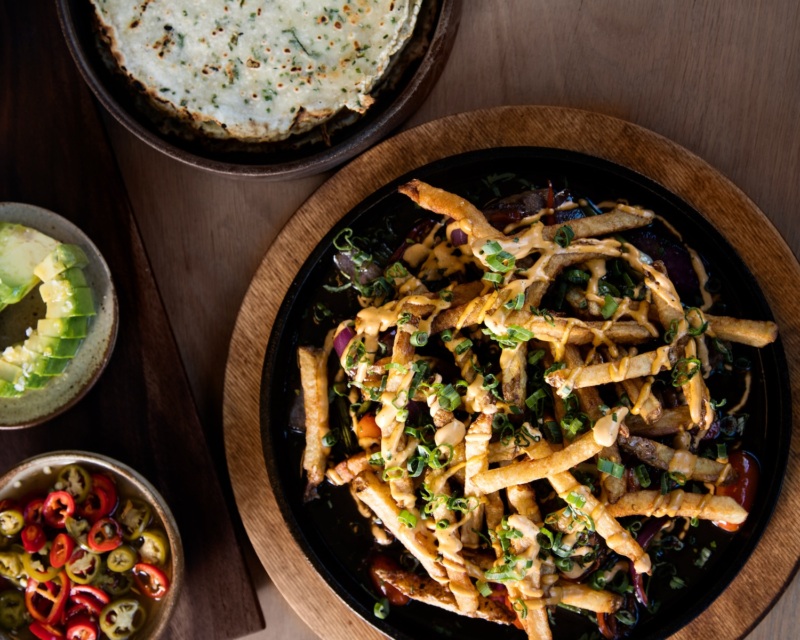

5. Lomo Saltado
Scallion pancake, rocoto
“This dish has been on the menu since day one. We’ve tried taking it off, but it’s never worked out: People came in and left pissed off when it wasn’t on the menu. It’s large; it can serve around two or three people, but there are a lot of steps to it.
“If there are two dishes that are truly emblematic to Peru that every Peruvian child loves, it’s lomo saltado and ceviche. Lomo saltado has Chinese influences; it’s sort of like a beef stir fry. We use beef tenderloin seared in a wok, with a sauce made of red onion, tomato, cilantro, garlic, soy sauce, oyster sauce, vinegar, and beef stock. We add a little slurry, and that’s the lomo saltado. Usually, you eat it with rice and French fries — we’re a very carb-on-carb culture.
“We serve it in cast-iron Lodge pans covered in French fries. On top of the fries is the rocoto crema, which is like a creamy, spicy sauce with the rocoto chiles, onion, garlic, cheese, evaporated milk, and huacatay, which is another Peruvian mint. Then you get an Asian-style scallion pancake, avocados, pickled chiles, and some more rocoto. You basically make a taco with your scallion pancakes.
“Once you get down to the sauce, your server will bring over rice and drop it in the center of the plate. If somebody knows the dish, they would be wondering “Where’s the rice?” but you get it as a surprise right at the end.
“This is another one that’s very traditional, that we didn’t really mess with. You get all these different sides, and that’s our spin on it. It’s very, very popular.”
Llama Inn is open for dinner Monday through Sunday from 5 to 10:15 p.m. They also serve brunch on Saturday and Sunday from 11:30 a.m. to 2:15 p.m.
Ellie Plass is a freelance writer based in Brooklyn. Follow her on Instagram and X. Follow Resy, too.
